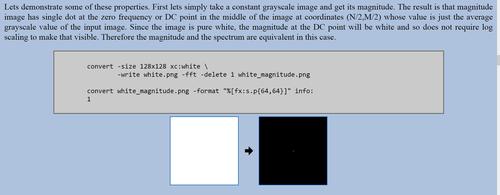I ask because a G'MIC FFT transform plot has the same aspect ratio as the input image ... but ImageJ (Fiji) produces a square plot and not necessarily the same edge size as either of the input edges - instead seeming to pick an edge dimension from a series like 1024, 2048, 4096, etc.
I know that the plot is based on Nyquist going from the center to an edge and I'm guessing that the square ImageJ plot should not affect one's assessment of the plot in terms of frequency response.
Anybody?




